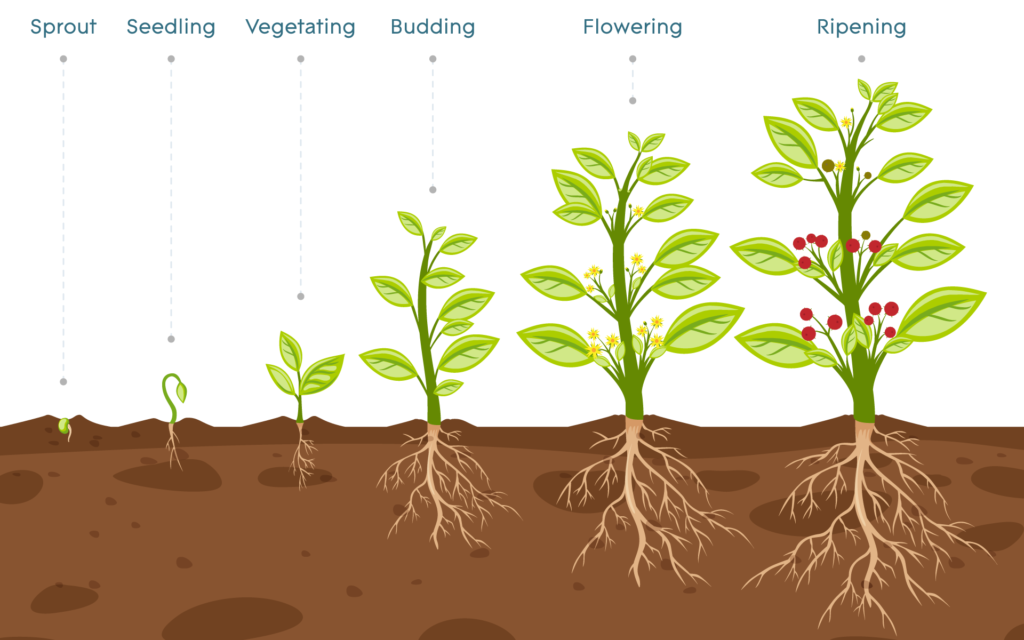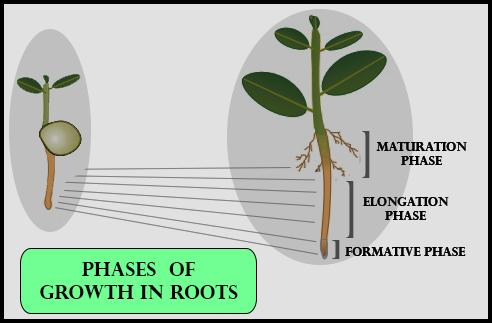CBSE Class 11 Biology Chapter 15 Revision Notes Part 1
Chapter 15: Plant Growth and Development Revision Notes Part 1
Plants are vital for the survival of nearly every living organism on earth. Through the process of photosynthesis, they absorb CO2 and produce oxygen, serving as the foundation of the food web by manufacturing sugars through light, water, carbon dioxide, and other substances.
The three primary functions that drive growth and development in plants are photosynthesis, respiration, and transpiration. All three are necessary for a plant’s life. The capacity of a plant to regulate these activities has a significant impact on its ability to compete and reproduce. This guide studies the control and coordination of these processes in cells, organs, and whole plants.
Plant Growth

Growth is the most basic feature of any living entity. It is characterized as a “permanent, irreversible growth in the size of an organ or its components, or even of a single cell”. Growth is typically accompanied by metabolic activities that use energy.
Characteristics of Plant Growth
Intermediate
Because of the presence of ‘meristems’ in their bodies, plants have the remarkable capacity to grow forever throughout their lives. Meristems are made up of cells that may divide and self-produce. Because the cells in the meristem continually add new cells to the plant body, this is known as the open mode of growth.
Meristems in plant roots and shoots are in charge of the plant’s primary growth. These help the plant grow taller. Lateral meristems, on the other hand, broaden the plant. This is referred to as secondary plant growth.
Measurable
At the cellular level, growth refers to a rise in protoplasm. Because this is difficult to quantify, growth is measured in quantity proportionate to the increase. As a result, growth is assessed in cell quantity, area, volume, length, etc. Here, growth is measured in cell size.
However, this is not the only way growth at the cellular level is measured. For example, a single apical meristem in maize roots may create over 17,500 new cells every hour! Here, growth is measured in cell quantity.
Regulators of Plant Growth
Plant Growth Regulators, sometimes known as phytohormones or plant growth hormones, are chemical compounds that influence all aspects of plant development and growth. They’re chemical substances that are either made in labs or spontaneously generated inside plants. They fundamentally influence and affect physiological processes such as plant growth, development, and mobility.
Phases of Plant Growth

There are three phases of plant growth: meristematic, elongation, and maturation, each of which we’ll briefly cover below.
Meristematic Phase
-
During the meristematic phase, cells in a plant’s root and shoot apex are continually dividing.
-
These cells have big nuclei, are rich in protoplasm, and have thin, cellulose-containing cell walls.
Elongation Phase
-
The cells in the zone just past the meristematic area are where elongation takes place.
-
Cells in this zone exhibit cell expansion, enhanced vacuole production, and new cell wall deposition.
Maturation Phase
-
The maturation phase is located near the site of elongation but away from the apex.
-
In this phase, cells in this area attain their largest size in terms of protoplasm and cell wall thickness.
Sources
Plant Growth and Development. https://ncert.nic.in/textbook/pdf/kebo115.pdf Accessed 20 Dec, 2021.
]]>